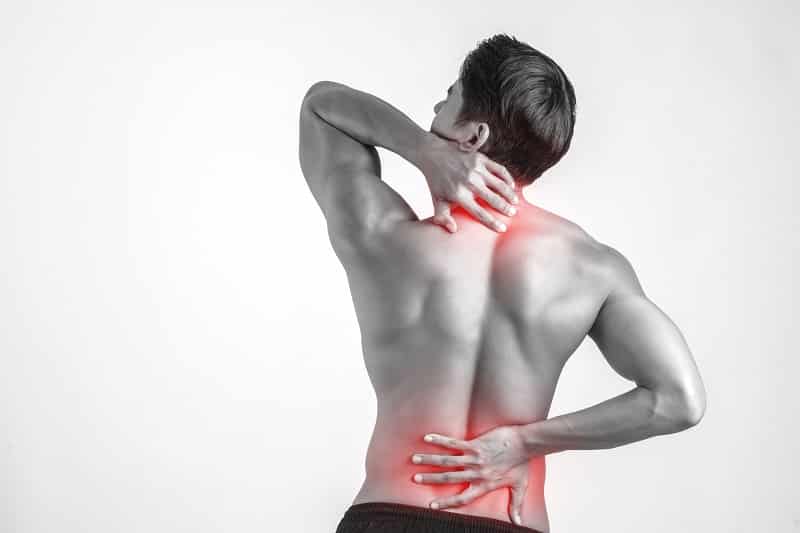Muscle Dysfunction – Causes, Symptoms, and Treatments
Muscle dysfunction is painful, frustrating, and debilitating. Evexia Family Chiropractic provides an alternate treatment for the muscle aches, and, in the following post, shares causes, symptoms, and treatments for the skeletal muscle disease. While muscle malfunction can be debilitating and painful, there are ways to relieve the pain and help your muscles function more properly. First, let’s discuss what exactly this muscle disease is.
Muscle Dysfunction Definition
Muscle dysfunction is a type of muscle degeneration. Affecting around 1 in 7000 people, muscle malfunction is when skeletal muscles start becoming weaker and weaker. Your muscles are a vital part of your body’s functionality, so treating muscle weakness and muscle loss the right way is so important. This muscle disease can lead to neck pain, back pain, and eventually, lead to needing a wheelchair. Keep reading for more information on treating muscle diseases.

all about muscle dysfunction
How muscle dysfunction can cause neck pain and back pain
Did you know this muscle condition can cause severe neck and back pain just as much as spinal misalignment can? Simply put, spinal misalignment is when one side of your body is imbalanced compared to the other side. Muscles suffering from pain and dysfunction for more than 12 weeks may become chronic pain. This muscle pain can cause the back, neck, and other parts of the body to ache.
Muscle Dysfunction Causes
Causes of muscle dysfunction include repetitive movements, poor posture, and certain sleeping positions.
Repetitive Movements
Repetitive movements can cause muscle imbalances. Situations, where repetitive movements are often seen, are sports where you use the same muscles and movements consistently or the manual labor workforce where employees are constantly doing the same task and job repeatedly. Make sure you are taking the proper precautions to ensure the muscles used are not getting severely overworked.
Poor Posture and Muscle Dysfunction

muscle dysfunction symptoms poor posture
Poor posture can also cause this painful muscle condition. The most common example of poor posture is seen when people are working or sitting at a desk with their head arched forward, their shoulders hunched, and their back slouched. Poor posture not only leads to poor circulation throughout the body, headaches, and eye strain but it can lead to muscle disorder as well. Let’s take a closer look at how poor posture can affect the muscles in your body.
People with desk jobs and computer jobs are often the most affected when it comes to poor posture and muscle dysfunction. When sitting in the same position all day long, the central nervous system begins to adapt to that certain position. The muscles affected in the posture start to adapt to the position, causing wear and tear to the other muscles in the body. Because of the constant fight back and forth between your muscles, each side becomes weaker and weaker, causing pain.
More on Poor Posture
When certain muscles are overactive and others are underactive, one may be suffering from a couple of different syndromes. The upper cross syndrome is when the muscles in the neck, shoulders, and chest become deformed. The deformed muscles cause a major strain to the neck, back, head, and more.
The lower cross syndrome is a result of muscle imbalances in the lower half of the body. Furthermore, the lower cross syndrome can be caused by a constant lengthening or shortening between the dorsal and the ventral sides of the body.
Poor posture and awkward sleeping positions can do much more harm to your body than one would think including causing muscle dysfunction. Next, let’s look at the symptoms of muscle dysfunction.

muscle dysfunction treatments
Muscle Dysfunction Symptoms
- Movement problems
- Muscle twitching
- Cramps, aches, and pains
- Balance Issues
- Numbness or tingling
Muscle Dysfunction Treatment
There are types of treatments that can help ease the pain of muscle dysfunction.
IASTM (instrument assisted soft tissue mobilization)
Instrument assisted soft tissue mobilization is a newer treatment that allows doctors and clinicians to accurately locate a muscle and soft tissue dysfunction. The treatment is efficient but non-invasive. How does instrument-assisted soft tissue mobilization work? The instruments used to break down scar tissue and fascial restrictions. Indications of muscle disorder when using the instrument are limited motion, motor control concerns, and pain during the instrument motion.
Instrument assisted soft tissue mobilization shows clinical benefits and improves range of motion and muscle strength. Those who suffer from this muscle condition have another option for treatment as well.
Activator Tool for Trigger Points
When you add pressure to certain trigger points they can point towards pain in other areas of the body. Trigger points are often used to relieve the pain. Evexia Family Chiropractic uses an activator tool for trigger points to deliver consistent therapy and pressure and to precisely apply the right strength to the trigger points, relieving the pain muscle dysfunction can cause.
Final Thoughts Evexia Family Chiropractic and Muscle Dysfunction Treatment
Evexia Family Chiropractic believes in treating the entire patient, not just their symptoms. If you are suffering from muscle dysfunction and pain, we provide a conservative, non-invasive approach. Our team focuses on treating your specific condition by forming an individualized treatment plan of action. Our mission is to keep you healthy and happy. Do not live in muscle dysfunction pain any longer and schedule an appointment with Evexia Family Chiropractic.

